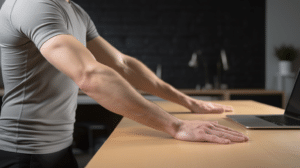As desk workers strive to balance the demands of their jobs and personal lives, active isolated stretching offers a viable solution for stress relief and posture improvement. By coinciding with this technique’s physical and mental benefits, it is possible to experience immediate results and long-term positive effects that can lead to improved well-being. Through this article, readers will better understand active isolated stretching, its benefits for desk workers, how to perform it safely, and tips on how to make it easier to help them achieve optimal health.
Key Takeaways
- Active Isolated Stretching is an effective method for desk workers to relieve stress and improve posture.
- By incorporating active isolated stretching exercises into their routine, desk workers can reduce discomfort and alleviate stress in various body areas.
- Active Isolated Stretching helps increase flexibility and range of motion while emphasizing precise body control and activating opposing muscle groups.
- Creating a comfortable and ergonomically designed workspace, taking regular breaks, and practicing active isolated stretching exercises can benefit desk workers, including reduced muscle tension, improved posture, and increased energy levels.
Understanding Active Isolated Stretching
Active Isolated Stretching is a technique that can be used to improve posture and reduce stress in desk workers. It is an effective stretching method designed to target specific muscles, tendons, and connective tissues for improved flexibility and range of motion. This type of stretching requires short holds (2-3 seconds) with rest periods between repetitions, allowing the muscle tension to relax while providing maximum benefit during the session. The goal is to help improve muscle circulation, which helps increase oxygen delivery and decrease lactic acid build-up for faster recovery times.
and range of motion. This type of stretching requires short holds (2-3 seconds) with rest periods between repetitions, allowing the muscle tension to relax while providing maximum benefit during the session. The goal is to help improve muscle circulation, which helps increase oxygen delivery and decrease lactic acid build-up for faster recovery times.
Additionally, this technique allows for a more excellent range of motion by helping move through tight areas without overstretching or damaging other connective tissue. As such, it provides an ideal way for desk workers to relieve stress while improving their overall posture. Proper execution of Active Isolated Stretching can help create balance within the body’s musculature system as well as help prevent injury from excessive strain or repetitive movement patterns at work.
Benefits of Stretching for Desk Workers
Performing specific stretches regularly can provide numerous advantages to those who spend most of their time at a desk. Desk workers are at risk for developing postural and musculoskeletal issues due to prolonged sedentary periods, but active isolated stretching effectively reduces discomfort and improves posture. Modifying workstations and regularly performing stretches can help alleviate stress in the neck, back, hips, shoulders, wrists, and feet. This type of stretching allows muscles to be gently lengthened while increasing flexibility and range of motion.
Active isolated stretching (AIS) is a technique that requires short-duration stretches held up to two seconds before being released. It emphasizes precise body control over muscle fibers with low repetitions, increasing joint circulation. The process involves contracting opposite muscles to activate and relax them simultaneously during the stretch. This helps create balance within the body by allowing opposing muscle groups to work together rather than against each other.
How to Perform Active Isolated Stretching
Practicing Active Isolated Stretching can be an effective way to increase flexibility and range of motion. This stretching method relieves muscle tension, improves posture, and reduces stress for desk workers. It involves isolating specific muscles and holding them in a contracted position for up to two seconds. To practice this technique correctly, it’s essential to use the correct form and breathing techniques that help relax the body.
Guidelines for Desk Workers
 Desk workers can benefit from specific guidelines related to Active Isolated Stretching to maximize the potential of this method. To begin, desk workers need an ergonomically designed workspace for easy stretching and movement. The chair should be adjustable so that one’s back is supported, elbows are at a ninety-degree angle, and feet are flat on the ground or supported by a footrest. Also, good posture habits should be encouraged throughout the day, such as keeping shoulders down and relaxed.
Desk workers can benefit from specific guidelines related to Active Isolated Stretching to maximize the potential of this method. To begin, desk workers need an ergonomically designed workspace for easy stretching and movement. The chair should be adjustable so that one’s back is supported, elbows are at a ninety-degree angle, and feet are flat on the ground or supported by a footrest. Also, good posture habits should be encouraged throughout the day, such as keeping shoulders down and relaxed.
Taking frequent breaks throughout the workday also reduces stress levels and improves posture. During these breaks, desk workers should practice active isolated stretching exercises, which involve moving limbs through their full range of motion while exhaling slowly through each stretch. This type of exercise not only helps alleviate tension but can also help increase energy levels during long days spent sitting at a desk.
Danger Signs When Practicing Active Isolated Stretching
When engaging in Active Isolated Stretching, it is important to know potential danger signs. These can include pain during stretching, dizziness, nausea, or other symptoms. If any occur during a stretch, the individual should stop immediately and contact a medical professional for advice. In addition to observing signs of physical discomfort, individuals should listen to their bodies and not push themselves beyond their limits while stretching. To prevent injury and improve posture using Active Isolated Stretching techniques, it is best practice to start slowly with small movements and gradually increase intensity over time as flexibility increases.
It is also essential to ensure that correct form is maintained throughout the stretching routine to maximize the effectiveness of the stretches and reduce the risk of injury. Performing an exercise incorrectly or without proper guidance from an experienced instructor can lead to incorrect alignment, unnecessarily straining muscles, or even causing further damage than before the training. This can affect posture improvement and overall health if not appropriately addressed. Therefore, you must be careful when practicing Active Isolated Stretching exercises at home or in any environment outside of a professionally supervised setting.
What to Do After Stretching
After completing Active Isolated Stretching exercises, taking the necessary steps to ensure maximum benefits is important. To maximize the positive effects of stretched muscles and improved posture, desk workers should:
1. Take a few minutes to relax after stretching
2. Make small adjustments to their posture as needed
3. Re-check their technique and make sure they are doing the stretches correctly
4. Incorporate other stretching techniques into their routine for greater effectiveness
Taking a few moments to relax after exercising allows time for the body’s natural healing process that follows an active stretch session. Doing so can also help reduce any lingering tension caused by tight muscles, improve circulation, and reduce soreness.
In addition, making postural adjustments throughout the day can prevent a person from becoming stuck in one position for too long, leading to further stress on joints and back muscles over time. Desk workers should also frequently check their form when performing each stretch to ensure they are not overstretching or putting themselves at risk of injury due to improper technique or bad habits such as bouncing while stretching. Finally, incorporating various stretching techniques into one’s daily routine will provide more comprehensive results than relying solely on Active Isolated Stretching alone.
Tips to Make Stretching Easier for Desk Workers
Using the proper techniques and tools can help make stretching easier for those who work at a desk. Incorporating trying into workdays is essential for relieving stress, improving posture, and staying active. A standing desk option is one way to incorporate movement while sitting or standing. This allows for more fidgeting than traditional desks, which helps with productivity and energy levels. Other options include taking regular breaks throughout the day to stretch or do light exercises like walking or jogging in place.
It’s important to use comfortable and manageable techniques for each person regarding stretching. Everyone’s body reacts differently, so it’s best to experiment with different options until you find something that works best for you. Additionally, having the right tools on hand can make all the difference in making stretching easier—such as foam rollers, resistance bands, yoga balls, chair mats, etc.—and will provide relief from sitting in awkward positions throughout the day. Incorporating these tips into your daily routine can reduce stress and improve posture without compromising productivity!
Frequently Asked Questions
What Other Forms of Stretching Are Beneficial for Desk Workers?
Stretching is essential to any exercise program, and desk workers can benefit from various stretching techniques. The benefits of yoga include improved flexibility, balance, strength, and relaxation. Yoga may also help reduce stress levels. Foam rolling is another form of stretching that can increase mobility and flexibility in the body’s joints and muscles.
Additionally, foam rolling improves circulation, reduces inflammation, and helps relieve muscle tension. Restorative yoga poses are an excellent option for those seeking more profound relaxation benefits, as they promote calming effects on the mind and body. As with any exercise program, it is always recommended to consult a physician before beginning any stretching routine for safety.
What Types of Injuries Can Occur if Active Isolated Stretching Is Not Practiced Correctly?
It is essential to imagine a body in motion, stretching, and reaching the limit of its capabilities, practicing proper form while utilizing active isolated stretching. If not done correctly, muscle strain can occur, leading to further injury. In addition, the benefits of extension could be recovered if appropriately practiced. Individuals must understand the importance of following instructions for proper stretching techniques to minimize potential injuries and maximize the benefits of active isolated stretching.
How Often Should Desk Workers Practice Active Isolated Stretching?
Active isolated stretching (AIS) is an effective preventative measure to ensure proper body alignment and reduce the risk of injury. To maximize its benefits, it is recommended that desk workers practice AIS regularly, focusing on proper technique. Generally speaking, aiming for two to three sessions per week of 10-15 minutes each ensures maximum benefit while minimizing the risk of overstretching or straining muscles. Furthermore, incorporating active isolated stretching into one’s daily routine can help desk workers stay healthy and improve their posture in the long run.
Is Active Isolated Stretching Suitable for All Age Groups?
Studies show that stretching can provide beneficial effects for people of all ages. Active Isolated Stretching (AIS) is no exception, and it can be suitable for individuals of any age when incorporated into a regular exercise routine with the help of ergonomics coaching. AIS is often combined with dietary changes to enhance results further, making it a popular choice for those looking to improve their posture and overall well-being. While AIS may not be appropriate for everyone, its low-impact nature makes it an ideal choice for older adults who wish to stay active without putting too much strain on their bodies.
Are There Any Medical Conditions That Make Active Isolated Stretching Unsafe?
Active isolated stretching can be an effective exercise and recovery technique, but it is important to consider medical conditions that may make it unsafe. Exercise modifications should be made for those with pre-existing health issues such as joint weakness or instability, osteoporosis, spinal disc issues, herniated discs, or unstable cardiovascular conditions. Additionally, stretches should be modified for those who have had recent surgery or a history of pain and injury in the area being stretched. In some cases, active isolated stretching may need to be avoided, depending on the individual’s medical condition.
Conclusion
The sedentary lifestyle of office workers often leads to poor posture, muscle imbalances, and chronic pain. Active isolated stretching (AIS) can be an effective way to address these issues. It is a form of stretching that focuses on targeting individual muscle groups with brief, isolated stretches and can help to improve muscle strength and joint range and reduce muscle spasms. Furthermore, it can also help to reduce joint pain and improve postural alignment.
To get the most out of AIS, it is essential to practice proper technique. This includes stretching each muscle group for no more than two seconds and ensuring that the stretch is done isolated rather than trying to push the entire body simultaneously. Maintaining proper form and taking regular breaks during stretching are also essential.
Incorporating AIS into one’s daily life can be a beneficial way of improving health and wellness. It can also be used in conjunction with other forms of treatment, such as massage and physical therapy. A qualified professional can help develop a treatment plan tailored to the individual’s needs. This plan should include guidance on performing the stretches correctly, when, and how to modify them according to the individual’s recovery time.
By following the guidance of a qualified professional, office workers can learn to use AIS to improve posture, reduce chronic pain, and improve overall health. With dedication and consistency, AIS can effectively target specific muscle groups and promote a healthier lifestyle.

